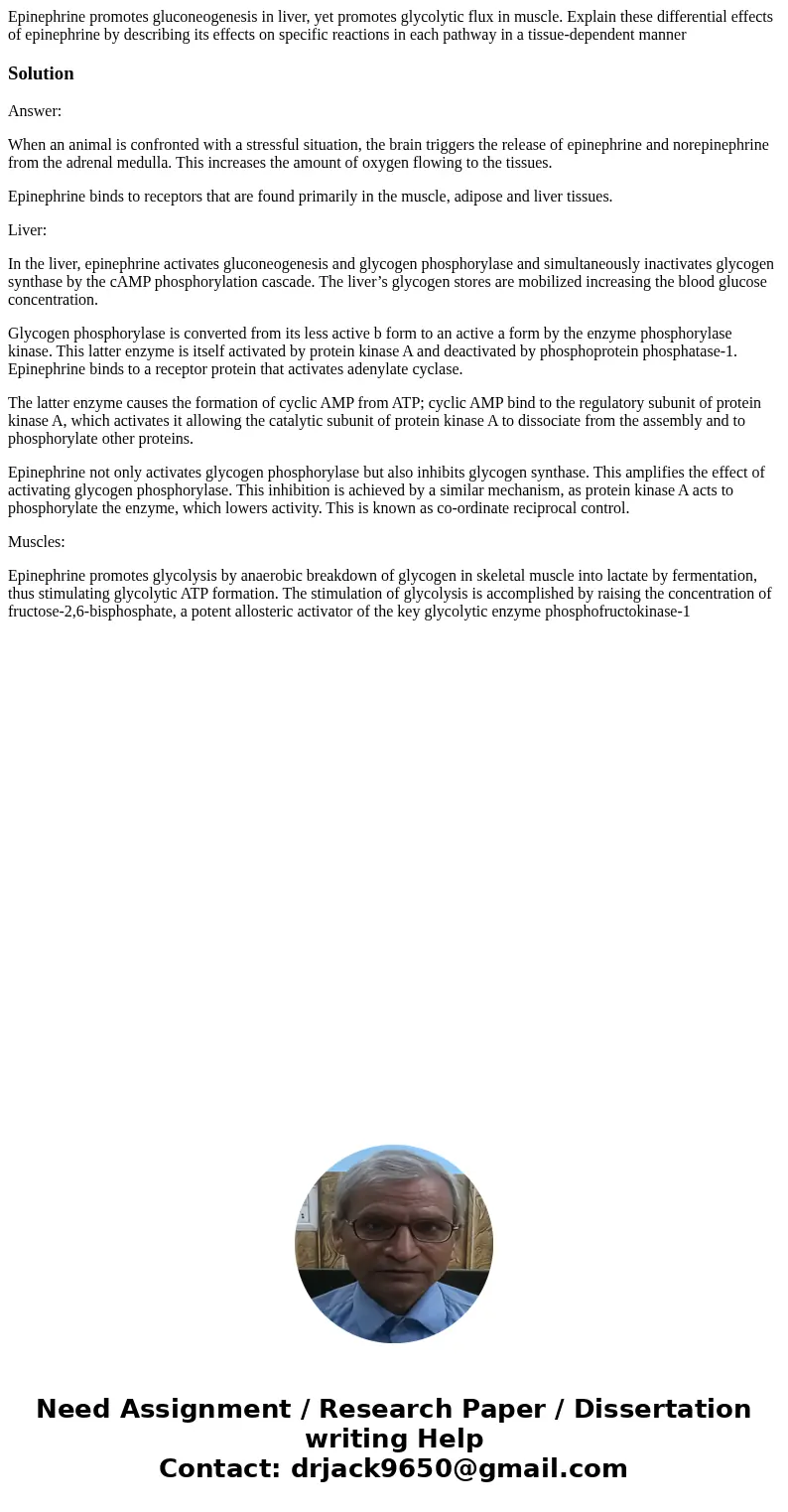Epinephrine promotes gluconeogenesis in liver yet promotes g
Epinephrine promotes gluconeogenesis in liver, yet promotes glycolytic flux in muscle. Explain these differential effects of epinephrine by describing its effects on specific reactions in each pathway in a tissue-dependent manner
Solution
Answer:
When an animal is confronted with a stressful situation, the brain triggers the release of epinephrine and norepinephrine from the adrenal medulla. This increases the amount of oxygen flowing to the tissues.
Epinephrine binds to receptors that are found primarily in the muscle, adipose and liver tissues.
Liver:
In the liver, epinephrine activates gluconeogenesis and glycogen phosphorylase and simultaneously inactivates glycogen synthase by the cAMP phosphorylation cascade. The liver’s glycogen stores are mobilized increasing the blood glucose concentration.
Glycogen phosphorylase is converted from its less active b form to an active a form by the enzyme phosphorylase kinase. This latter enzyme is itself activated by protein kinase A and deactivated by phosphoprotein phosphatase-1. Epinephrine binds to a receptor protein that activates adenylate cyclase.
The latter enzyme causes the formation of cyclic AMP from ATP; cyclic AMP bind to the regulatory subunit of protein kinase A, which activates it allowing the catalytic subunit of protein kinase A to dissociate from the assembly and to phosphorylate other proteins.
Epinephrine not only activates glycogen phosphorylase but also inhibits glycogen synthase. This amplifies the effect of activating glycogen phosphorylase. This inhibition is achieved by a similar mechanism, as protein kinase A acts to phosphorylate the enzyme, which lowers activity. This is known as co-ordinate reciprocal control.
Muscles:
Epinephrine promotes glycolysis by anaerobic breakdown of glycogen in skeletal muscle into lactate by fermentation, thus stimulating glycolytic ATP formation. The stimulation of glycolysis is accomplished by raising the concentration of fructose-2,6-bisphosphate, a potent allosteric activator of the key glycolytic enzyme phosphofructokinase-1

 Homework Sourse
Homework Sourse